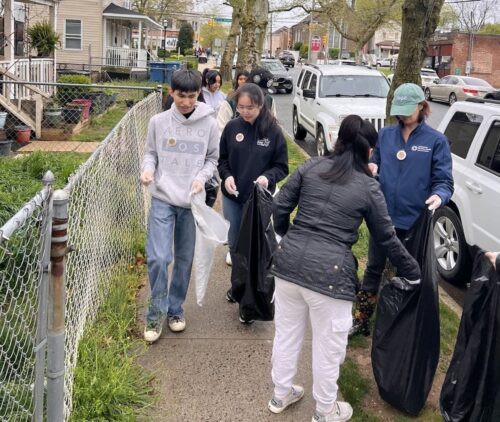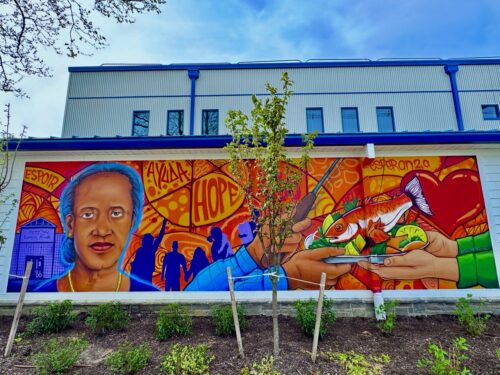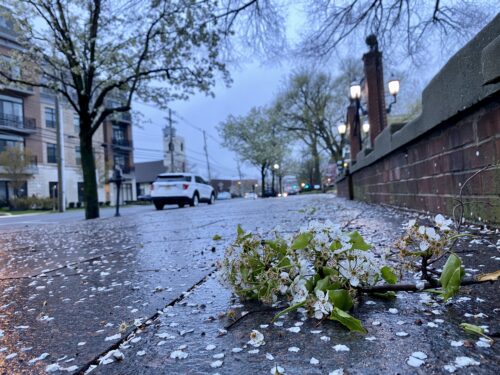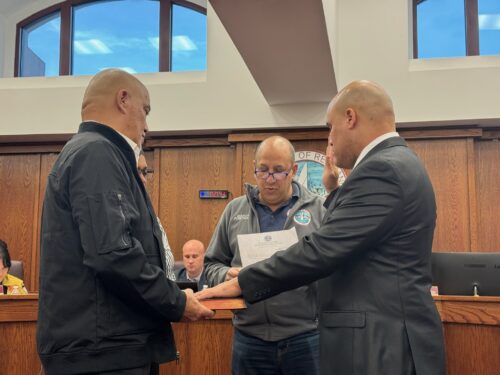
By JOHN T. WARD
After a decade-long effort to save it from the wrecking ball, Red Bank’s T. Thomas Fortune house is in the midst of a restoration that has served up some additional history.
Part of the Second Empire-style mansion on Drs. James Parker Boulevard may be much older than previously believed, says developer Roger Mumford, who is racing to conserve what he can of the structure even as it crumbles before his eyes.

A recent dendrochronological, or tree ring, analysis of timber samples used in the structure suggests that part of the house may date from as early as 1774, or nearly a century before an earlier estimate of construction.
In a report of his findings completed for Mumford last month, Richard Veit, chairman of the history department at Monmouth University, writes that it’s not clear if the oldest portion of the home was built on site or moved there from elsewhere.
“The structure was enlarged and improved in the late 19th century, and its façade appeared as it does now by the time Fortune acquired the house,” Veit wrote.
George Bowden, then chairman of the borough Historical Preservation Commission, estimated in 2007 that the house was built between 1873 and 1880. Now, “it appears it may have been built in two or three different periods,” Mumford told redbankgreen on a site tour Monday.
From 1901 to 1911, the house served as home to Timothy Thomas Fortune, a pioneering civil rights journalist and essayist who had been born into slavery in Florida in 1856. W.E.B DuBois, Booker T. Washington, Marcus Garvey and other leading thinkers of the post-Civil War drive for equal rights for African-Americans are said to have visited him there.
The house was entered on the National Register of Historic Places in 1976, and remains one of only two such sites in New Jersey associated with African-American history.
Through his Fortune Square LLC, Mumford acquired the one-acre property from members of the Vaccarelli family, whose ancestors had bought it in 1918 and operated a wholesale bakery there for decades. The family was preparing to demolish the house when they offered it to Mumford, he told the borough zoning board in 2016.
A homebuilder based on Bridge Avenue — and one of two remaining contenders to redevelop the borough-owned White Street parking lot downtown — Mumford said the Fortune structure was in far worse shape than anticipated. Parts of the foundation were nothing more than loose brick, the mortar having turned to sand, he said. The mansard roof, which was clearly added at some point well after the main parts of the house, had been damaged by fire, and had raccoons living in it recently.
In between, floor joists and wall studs have rotted to the point that many of them have had to be “sistered,” or braced with new structural material.
“There’s $35,000 worth of structural engineering expended here” just on plans to support the building as its being restored, Mumford said.
Spencer Foxworth, who’s overseeing much of the construction, estimated that 75 percent of the original structure, including posts, tenons and pegs, has been preserved.
Despite its frail condition, the first floor was “perfectly level,” and Mumford says he’s confident that the restored structure will be a near-exact facsimile of the house, which he plans to donate to the nonprofit T. Thomas Fortune Project for use as a museum and cultural center.
Equipped with an Americans with Disabilities Act-compliant restroom and a galley kitchen, the house will feature the original parlor trim inside, with new wood-frame windows and wood siding outside, he said. Decorative corbels that trim the underside of the mansard roof will be reinstalled, the unsalvageable ones having been replicated in mahogany, Mumford said.
“We’re bringing it back to how it was when Thomas Fortune lived here,” he said.
In conjunction with the restoration, Mumford is building Fortune Square, 31 rental apartments in a four-story structure along the northern edge of the site, behind the main house. In recent weeks, passersby could watch as two stair towers and a central elevator tower were built in cinderblock.
A “density bonus” granted by the zoning board made the restoration project economically feasible, Mumford said.
Mumford anticipates completing both projects simultaneously next August or September, he said, and plans to host a public debut “so people can see that the apartments are really thematically cohesive with the original house.”























